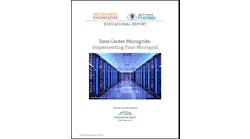Audrey Zibelman, CEO of the Australian Energy Market Operator and former chair of the New York Public Service Commission, talks to Giles Parkinson of RenewEconomy about the rise of distributed energy and Australia’s leadership role in the transition.
Audrey Zibelman, CEO Australian Energy Market Operator
Australian Energy Market Operator CEO Audrey Zibelman says Australia will be a world leader in the transition to a smarter and cheaper renewables based-grid, and trying to resist that change is like trying to stop the internet.
In an interview on RenewEconomy’s weekly Energy Insiders podcast, Zibelman discusses new technologies such as battery storage, the proposed National Energy Guarantee and the need for demand response.
Zibelman talks of the need for fast-response technologies to balance the output of zero marginal cost energy sources likes wind and solar, and said some” baseload” capacity will be needed, but it does not need to be coal.
“(When) people think baseload, they think coal,” Zibelman says. “(Baseload) is not any particular fuel source, it is just the capability to run flat out, in an efficient way over a long period of time. And they are dependable.” She cites hydro as a particularly useful baseload resource.
But Zibelman also highlights the changing nature of technologies, and says much of the future focus will be on fast-reacting “dispatchable” options that can balance the variability of renewable energy sources such as wind and solar, which will inevitably dominate the grid.
Asked if she is as confident now as she had been in March – when she left her position as head of new York’s Reforming the Energy Vision program, and took up her AEMO post – about the prospect of a cheaper, smarter, cleaner and more reliable grid, Zibelman said:
“I absolutely am. I continue to think … as I see many of the things going on around Australia in terms of technology development, and certainly the solar penetration … that Australia is going to lead, and we have to lead.
“We will lead around how to use those resources, and how we make this transition.
“This is not a judgment about anything. It’s just the reality that the economics have changed, and technology has changed, and resisting this change is a little like trying to resist the internet. It’s just going to happen because of where technology is going.”
“…resisting this change is a little like trying to resist the internet” — Ziebelman
Zibelman’s comments come as AGL confirmed it would not be coerced by the federal government into prolonging the life of its ageing Liddell coal-fired generator, and would instead replace it with a mix of renewables, storage, gas peaking plants and demand response.
The Zibelman interview was conducted on Friday afternoon before the AGL announcement on Saturday morning, although its plans had been well foreshadowed. AEMO has been asked by the government to assess the AGL proposal.
It is difficult to see how AEMO would reject it, given that it meets its own assessment that around 1GW of dispatchable generation will be needed to replace Liddell, and that more renewables will also be important to head off any supply shortfalls.
One criticism of the AGL plan has come from the Institute for Sustainable Futures, which argues that if more emphasis had been put on energy efficiency and demand management, then the cost of the replacement would have been cheaper and more beneficial to consumers.
ISF says a true clean energy hub to replace Liddell would not only deliver zero emissions, but would cost just $56/MWh, as opposed to the $83/MWh contemplated by AGL’s plan. But it would need government policy action on energy efficiency, demand response and time varying prices.
Zibelman is also a fan of demand response, and admits she was frustrated to see the reaction in many parts of the media when AEMO’s own plans for significant amounts of demand response initiatives for the coming two summers were unveiled.
“People thought that we would be going around asking people to turn off their lights,” Zibelman says.
“What we are really talking about is managing machines better … if we can do these things in concert we can manage the grid and make it more efficient.
[clickToTweet tweet=”Audrey Zibelman explains what people get wrong about demand response #newgrid #microgrid” quote=”Audrey Zibelman explains what people get wrong about demand response”]
“There is a bit of snarkiness about it … which is unfortunate. This isn’t about not using electricity, it’s about not wasting it.”
Zibelman was also enthusiastic about the Tesla big battery, which was officially opened earlier this month, and the other storage projects – particularly in South Australia where solar towers with storage and more battery storage installations are planned.
Indeed, South Australia is now operating at penetration levels of well above 50 per cent wind and solar, and in September was operating at more than 60 per cent.
“The technologies that we are seeing in South Australia and Victoria are what are going to start setting the transformation that people are talking about in this industry,” Zibelman says.
She spoke of the “amazing” development of producing electricity at zero marginal cost (wind and solar), and the need to use data and storage to manage this.
She spoke of the “amazing” development of producing electricity at zero marginal cost (wind and solar)
“The game changer around storage is that we can address the variability of these resources,” rather than keeping spinning reserve in place in case of any issues. She talks of conducting “baseload”, storage and demand response rather like an orchestra. It’s how it all works together that is important.
Still, Zibelman admits that AEMO has some work to do to understand how to manage this system, as can be seen in South Australia where it is imposing new restrictions and standards to ensure that no mistakes are made as the share of wind and solar grow ever higher.
“AEMO is looking at it how we are going to operate a system that looks like South Australia, with a lot more renewables and a lot of distributed generation,” she says.
“It will take time for us to develop the capabilities to manage that. While we don’t predict what that future will be, it is a scenario that we have to plan for and understand.
“We need to make sure that our lack of understanding does not become a barrier (to new technologies).
On the issue of the NEG, Zibelman indicated that the policy was still something of an open book. The NEG has been criticised for not being ambitious enough, for not encouraging enough new investment, and for seemingly reinforcing the position of the big incumbent utilities.
Zibelman said that the modelling that raised those concerns was just that – an economic analysis – and not a prediction.
She said the mandate from the COAG energy ministers was to “go out and consult” and this would be a broad consultation process that included traditional incumbents and new players.
“… So the outcome of the design is that you have a much broader tent of energy players being able to endorse this, saying ‘yes this can create a mechanism that we can invest against,’ and for AEMO this is a mechanism we can use, along with other actions we need to take, to make the market more efficient.”
As for the future, she says it will be vastly different, but will be as difficult to predict as it was for the internet even 10 or 20 years ago
“It is going to be vastly different. What that difference is, we really won’t know until we get there.”
This article originated on RenewEconomy and was reposted with permission.







